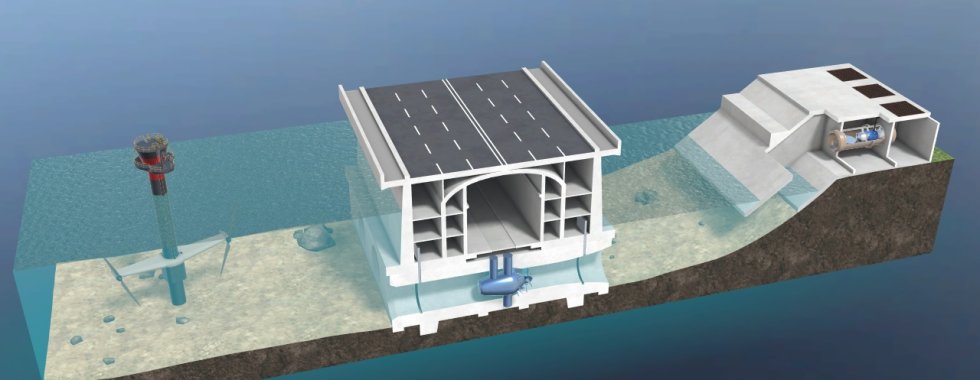
Tidal Energy and Sea Wave Power
3 min read
Tidal Energy
Video: Tidal power plant working principle. Tidal power plant exploits the difference of the water level in the bay and on the open sea arising in various stages of the tide. By the balancing the water levels, the water flow is created to spin the turbines.
Tidal power plants operate on the principal of capturing water in a basin at high tide. During ebb-tide the water is discharged through a barrier fitted with turbines. Theoretically, it is possible to use the turbines in both flow directions but it is more economical if they are used only during ebb-tide. Examples of successfully operating plants of this type can be seen in South Korea, France, the Russian Federation, or China. Just as in the case of large dams, tidal barrages, too, have a great impact on their environment. Damming a bay restricts fish migration, ship traffic and causes sediments in the bay to accumulate more rapidly.
Therefore, a brighter future probably awaits tidal stream generators rather than tidal barrages.
Tidal stream generators (TSG), often referred to as tidal energy converters (TEC), are anchored in the seabed individually, so they have little influence on their environment. They are driven by strong tidal currents, which can be found in suitably shaped straits.
Tidal energy drove tidal mills as early as the 15th century. The biggest tidal power plant may be built in Penzhin Bay, Russia. It would have an output of 87 GW. Currently, proceeding with this project is not being considered.
On August 4th, 2011, South Korea started operating the world’s largest tidal barrage power plant. The Sihwa plant has an installed capacity of 254 MW, surpassing even the tidal power plant at La Rance, which was up till then the largest.
Wave Power
Video: 3D model of ocean’s wave power plant prototype.
Through solar radiation, the air over the ocean is usually heated at a different rate than the air over land that causes temperature/pressure differences, which in turn causes wind to blow and wind gives its power to the ocean waves. There is enough evidence that worldwide, this energy has a huge potential. Development of power plants harnessing the energy of sea waves takes place mainly in Japan, Great Britain, Ireland, Norway and Denmark. Various prototypes of such power plants exist in the world but so far there is only one commercial project in preparation which is run by the Pelamis Company.














